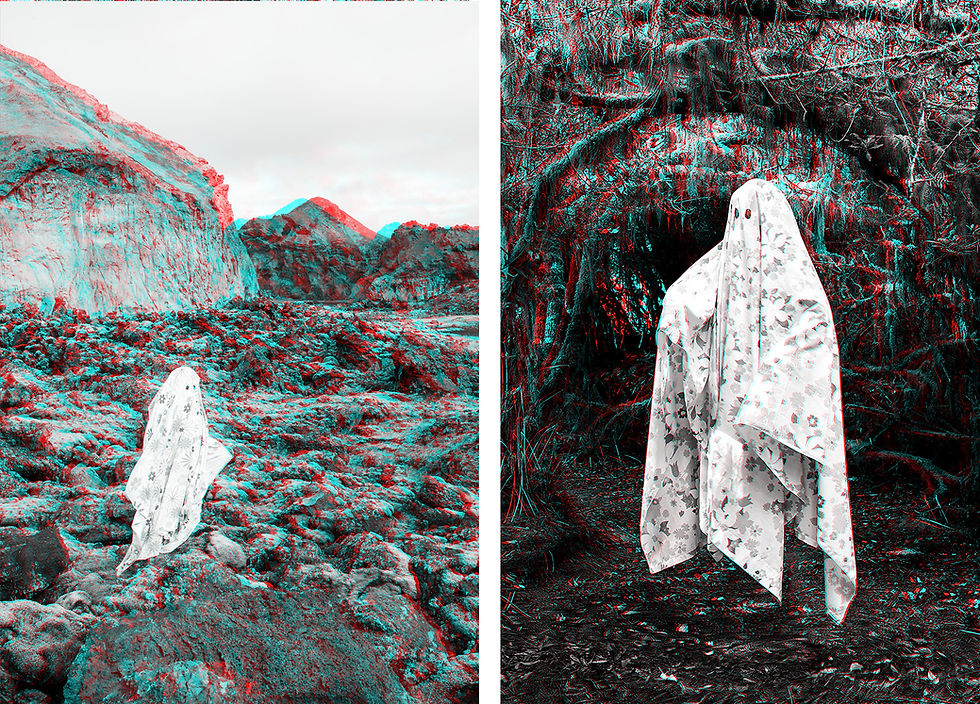Accumulative Reduction
- Amelia Biewald
- Nov 14
- 3 min read
Updated: 5 days ago
Exhibition Dates: January 10th - February 1st, 2026
Reception: Saturday, January 10, 6-8pm
Artist conversation: Thursday, January 29th, 7-8pm with Aaron Dysart and Lindsy Halleckson

Accumulative Reduction
New Work by Betsy Ruth Byers and Emily Dzieweczynski
As artists, we are drawn to the collection and dissemination of scientific data — particularly to what is lost or gained through the iterative process of translating quantitative data. Inquiry drives our practice more than resolution. Can all experience be reduced to data? What remains — or disappears — when data is stripped of its context? What can an artist’s perspective bring to scientific field work?
We are interested in the poetic relationship between objectivity and subjectivity. Human observation and the integration of multiple perspectives are essential in the scientific process, and perhaps this transient boundary is where we can begin to question our knowledge gaps. When we remove sensorial experience from the equation and abstract ecosystems into datasets, in what ways do we risk becoming disconnected from the environments we study?
In these works, we reflect on our phenomenological experiences in the field and the inability to ever understand something fully. As artists, we acknowledge that all data comes from something real.

Acknowledgements:
The work in this exhibition is supported by the National Science Foundation under Grant No. 2317853. The interdisciplinary team consists of principal investigators Dr. Joel Barker, Dr. Katherine Flanigan, Dr. Elizabeth Sumida Huaman, Dr. Jeff La Frenierre, Dr. Li Li, Dr. Crystal Ng, Dr. Diego Riveros-Iregui, Dr. David Rounce, Dr. Cara Santelli, and Dr. Daniel Stanton. Additional team members include or have included: Ally Jacoby, Andrea Cruz Bracamontes, Angela Douglass, Cora Hentges, Dr. Joel Baker, Maddie Banks, Dr. Tiago Bittencourt, Valerie Diana Smykalov, Jazmin Aspiazu, Dr. Xavier Zapata Ríos, Dr. Veronica Graciela Minaya Maldonado, Dr. Carla Paola Manciati Jaramillo, Bobby Schulz, Briana Jol, Dr. Leila Sabari, Evan Taylor, and Leah Nelson.
We greatly appreciate Corporación de Organizaciones Campesinas e Indígenas Juan Montalvo, which includes the Kichwa communities of Espiga de Oro, Pucará, Chaupiloma, El Verde, and San Jose, for allowing us to access their land, in addition to all of the support and hospitality they extended to us. We are deeply grateful to the staff at the Refugio Ruales Oleas Berge and Refugio Yanacocha for accommodating us. We want to specifically acknowledge Don Carlos, Don Juan, Alberto, and Cristian.
Any opinions, findings and conclusions or recommendations expressed in this material are those of the artists and do not necessarily reflect the views of the National Science Foundation.

Bios:
Betsy Ruth Byers holds a Master of Fine Arts in Visual Studies with an emphasis in painting from the Minneapolis College of Art and Design and a B.A in Studio Art with a concentration in Environmental Studies from St. Olaf College. Byers is currently a Professor of Art at Gustavus Adolphus College in St. Peter, MN. Her abstract landscape paintings are rooted in the sensory experience of the natural world and seek to activate a visceral and tactile relationship with the viewer.
Byers’ work has been exhibited at the National Gallery of Scotland, Minnesota Museum of American Art, De Vos Art Museum, Hillstrom Museum of Art, University of Connecticut, Guilford Art Center, Augsburg College, and University of Minnesota Morris. She has received funding through the National Science Foundation Grants, Minnesota State Arts Board, Gustavus Adolphus College and the Kolman & Reeb Project Space Grant. She is represented by Kolman & Reeb Gallery and Rosalux Gallery in Minneapolis.
Emily Dzieweczynski
Emily is a new media artist, communicator, and writer. Emily holds BA’s in Psychological Science and Studio Art from Gustavus Adolphus College and additionally studied Fine Arts Media at the Slade School of Fine Art. Her work takes the form of research, writing, and new media; including code, virtual reality, 3D modeling, web-based media, sound, and video.
Her work has been shown at the Target Gallery, the American Swedish Institute, Rosalux Gallery, Highpoint Center for Printmaking, Gustavus Adolphus College, and the School of Visual Arts in New York. She has received funding through the National Science Foundation, the Minnesota State Arts Board, Springboard for the Arts, and Gustavus Adolphus College. Currently, Emily works as a communicator at the Bell Museum and as a studio manager at Second Shift Studio Space.
For Inquiries Contact:
Instagram @betsyruthbyers and/or @em.dzzz
Rosalux Gallery hours are 12-4 PM on Saturdays and Sundays.
The gallery is located at 315 W 48th Street in Minneapolis. Rosalux is always free and open to the public.



Comments